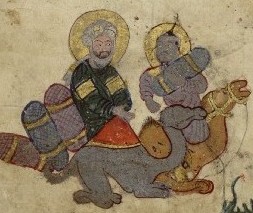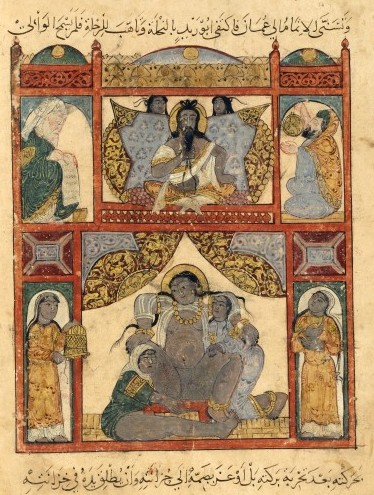Al Hariri: Maqamat (d1122)
----------------------------
Taken from : B. Lewis : Race and Slavery in the Middle East.
The archaeology of seafaring in ancient south asia by Himanshu Prabha Ray
(and several others)
Full name: Yahya ibn Mahmud al-Wasiti
The maqamat (assemblies) of al-Hariri d 1122. The maqamat are a collection of 50 anecdotes featuring a narrator and a witty vagabond called Abu Zayd.
Some paintings are of interest to us; one of the slave market and the others of the boat on the sea.
The painting shows the slave market in Zabid, in the Yemen. Then an important town.
This scene involves the purchase of a slave. Here is the boy (says Abu Zayd masquerading as a slave merchant).... I which to make you fond of the lad by lightening the price for him, so weigh out two hundred dirhams.
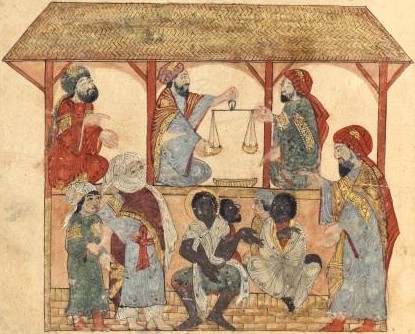
The crew appears to be also indian and rather dark skinned, while the muslim passengers wearing turbans are evidently Arab or Persian. There is apparently at least one deck, since the negro looking people employed as bailers are on a lower level then the passengers.
The stern rudder, fixed at the back of the ship operated by a rope-steering system (which was typical of the Omani double ended badan, baggara and zaruka) facilitates the operation of the boats. Until then, one knew only the side rudder handling itself like an oar.
Other features worthy of note: the crow's nest, a deck house located ahead of the mast, a straight stem, a curious curved stern and an iron four pronged grapnel anchor hanging a divided bowsprit. A dual bowsprit could be found up to 30 to 50 years ago on the Kuwaiti bum, a double ended ship with a straight bow set at an angle of 45 degrees.
This illustrations are the oldest drawing we have of Persian boats on the open sea. It got used by Chittick in 1980 as the example of the ships in which the Arabs traded in East Africa.
Chittick 1980, sewn boats in the western Indian Ocean and a survival in Somalia, The international journal of Nautical Archaeology and underwater exploration 9(4) ; 297-304
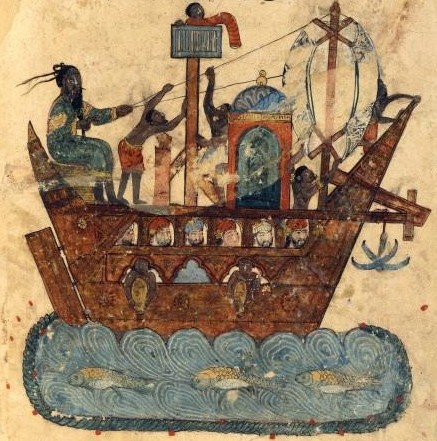
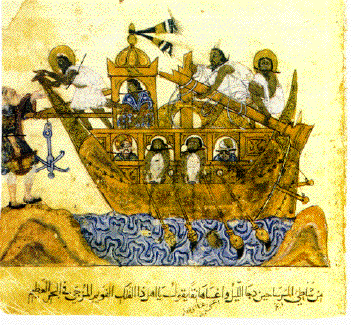

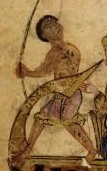
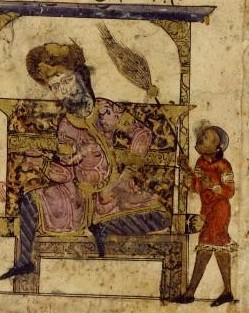
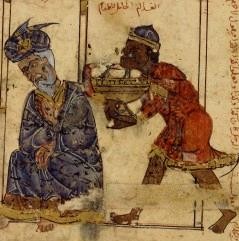
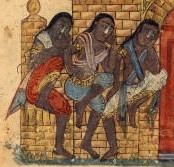
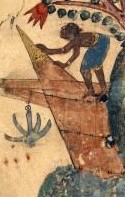
front of the palace of the king. Even now would the dance and the
costume of the guards fit in East Africa

